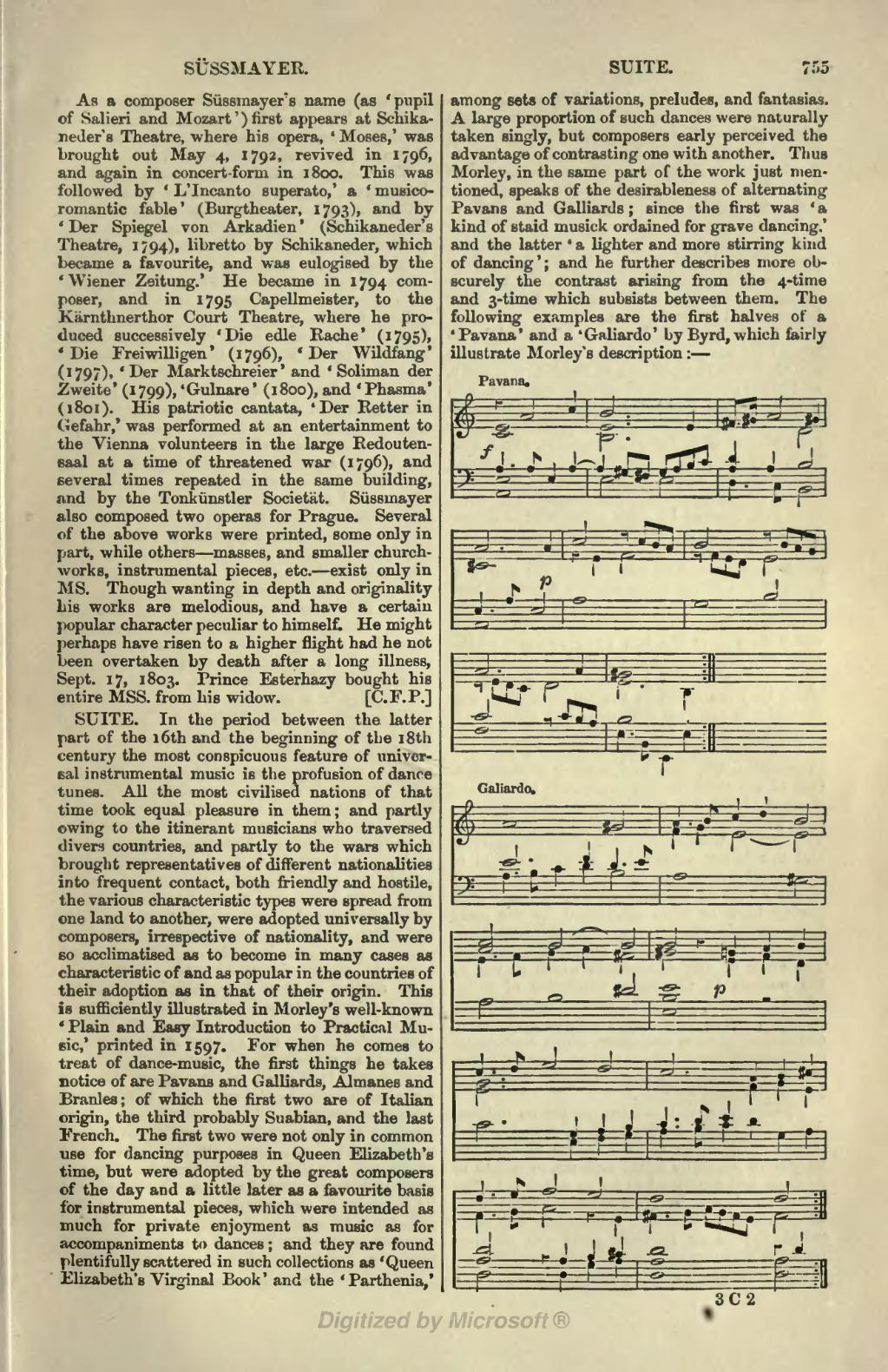As a composer Süssmayers name (as 'pupil of Salieri and Mozart') first appears at Schikaneder's Theatre, where his opera, 'Moses,' was brought out May 4, 1792, revived in 1796, and again in concert-form in 1800. This was followed by 'L'Incanto superato,' a 'musico-romantic fable' (Burgtheater, 1793), and by 'Der Spiegel von Arkadien' (Schikaneder's Theatre, 1794), libretto by Schikaneder, which became a favourite, and was eulogised by the 'Wiener Zeitung.' He became in 1794 composer, and in 1795 Capellmeister, to the Kärnthnerthor Court Theatre, where he produced successively 'Die edle Rache' (1795), 'Die Freiwilligen' (1796), 'Der Wildfang' (1797) 'Der Marktschreier' and 'Soliman der Zweite' (1799), 'Gulnare' (1800), and 'Phasma' (1801). His patriotic cantata, 'Der Retter in Gefahr,' was performed at an entertainment to the Vienna volunteers in the large Redoutensaal at a time of threatened war (1796), and several times repeated in the same building, and by the Tonkünstler Societat. Süssmayer also composed two operas for Prague. Several of the above works were printed, some only in part, while others—masses, and smaller church-works, instrumental pieces, etc.—exist only in MS. Though wanting in depth and originality his works are melodious, and have a certain popular character peculiar to himself. He might perhaps have risen to a higher flight had he not been overtaken by death after a long illness, Sept. 17, 1803. Prince Esterhazy bought his entire MSS. from his widow.
[App. p.797 "See also Mozart in Appendix."]
SUITE. In the period between the latter part of the 16th and the beginning of the 18th century the most conspicuous feature of universal instrumental music is the profusion of dance tunes. All the most civilised nations of that time took equal pleasure in them; and partly owing to the itinerant musicians who traversed divers countries, and partly to the wars which brought representatives of different nationalities into frequent contact, both friendly and hostile, the various characteristic types were spread from one land to another, were adopted universally by composers, irrespective of nationality, and were so acclimatised as to become in many cases as characteristic of and as popular in the countries of their adoption as in that of their origin. This is sufficiently illustrated in Morley's well-known 'Plain and Easy Introduction to Practical Music,' printed in 1597. For when he comes to treat of dance-music, the first things he takes notice of are Pavans and Galliards, Almanes and Branles; of which the first two are of Italian origin, the third probably Suabian, and the last French. The first two were not only in common use for dancing purposes in Queen Elizabeth's time, but were adopted by the great composers of the day and a little later as a favourite basis for instrumental pieces, which were intended as much for private enjoyment as music as for accompaniments to dances; and they are found plentifully scattered in such collections as 'Queen Elizabeth's Virginal Book' and the 'Parthenia,' among sets of variations, preludes, and fantasias. A large proportion of such dances were naturally taken singly, but composers early perceived the advantage of contrasting one with another. Thus Morley, in the same part of the work just mentioned, speaks of the desirableness of alternating Pavans and Galliards; since the first was 'a kind of staid musick ordained for grave dancing,' and the latter 'a lighter and more stirring kind of dancing'; and he further describes more obscurely the contrast arising from the 4-time and 3-time which subsists between them. The following examples are the first halves of a 'Pavana' and a 'Galiardo' by Byrd, which fairly illustrate Morley's description:—


